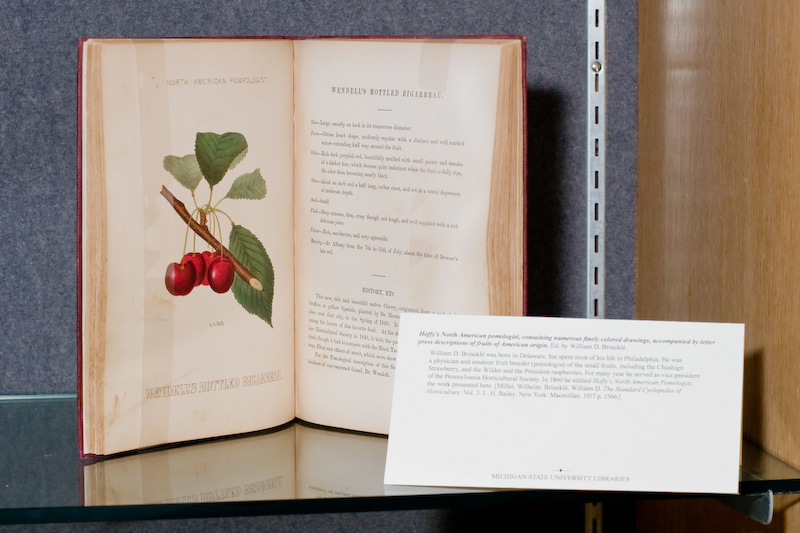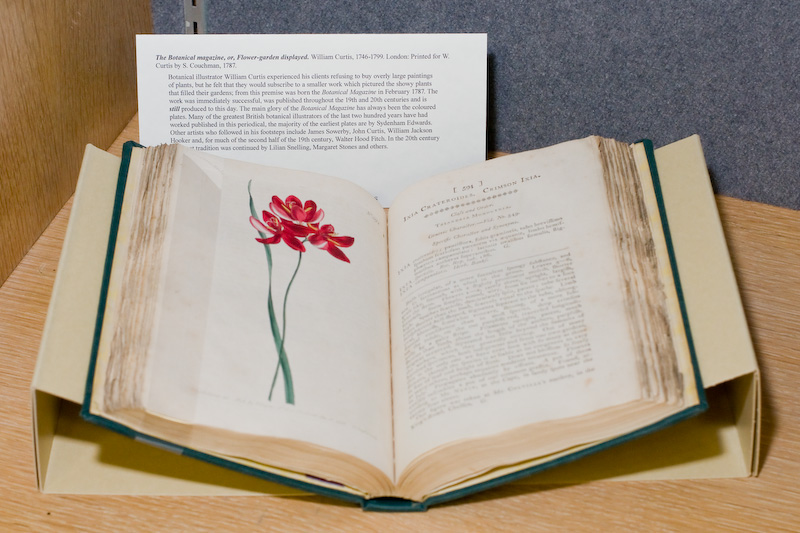North American Works
- A flora of North America. Illustrated by coloured figures, drawn from nature. William P.C. Barton, 1786-1856. Philadelphia, M. Carey & sons, 1821.
- Barton states in the advertisement to the first volume that some of the 'plates are printed in colour, and are afterwards coloured by hand. It is confidently believed by the author, that they will be found the most successful attempts at imitation by sound engraving, of the French style, yet made in this country.' He goes on to note that the method of colour printing was the result of 'repeated experiments' owing 'to the impossibility of obtaining information as to the manner of colouring abroad'. The text gives details of each species, its Latin binomial, common name, and class and order according to the Linnaean system, followed by interesting information about the history of the discovery of the species and details about its geographical range.
- Hoffy's North American pomologist, containing numerous finely colored drawings, accompanied by letter press descriptions of fruits of American origin. Ed. by William D. Brincklé.
- William D. Brincklé was born in Delaware, but spent most of his life in Philadelphia. He was a physician and amateur fruit breeder (pomologist) of the small fruits, including the Chushign Strawberry, and the Wilder and the President raspberries. For many year he served as vice president of the Pennsylvania Horticultural Society. In 1860 he editied Hoffy's North American Pomologist, the work presented here.
- [Miller, Wilhelm. Brincklé, William D. The Standard Cyclopedia of Horticulture. Vol. 3. L. H. Bailey. New York: Macmillan, 1917 p. 1566.]
- The Botanical magazine, or, Flower-garden displayed. William Curtis, 1746-1799. London: Printed for W. Curtis by S. Couchman, 1787.
- Botanical illustrator William Curtis experienced his clients refusing to buy overly large paintings of plants, but he felt that they would subscribe to a smaller work which pictured the showy plants that filled their gardens; from this premise was born the Botanical Magazine in February 1787. The work was immediately successful, was published throughout the 19th and 20th centuries and is still produced to this day. The main glory of the Botanical Magazine has always been the coloured plates. Many of the greatest British botanical illustrators of the last two hundred years have had worked published in this periodical, the majority of the earliest plates are by Sydenham Edwards. Other artists who followed in his footsteps include James Sowerby, John Curtis, William Jackson Hooker and, for much of the second half of the 19th century, Walter Hood Fitch. In the 20th century the great tradition was continued by Lilian Snelling, Margaret Stones and others.





